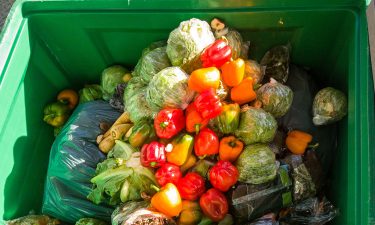Special therapeutic food can help gut health of malnourished children
- Like
- Digg
- Del
- Tumblr
- VKontakte
- Buffer
- Love This
- Odnoklassniki
- Meneame
- Blogger
- Amazon
- Yahoo Mail
- Gmail
- AOL
- Newsvine
- HackerNews
- Evernote
- MySpace
- Mail.ru
- Viadeo
- Line
- Comments
- Yummly
- SMS
- Viber
- Telegram
- Subscribe
- Skype
- Facebook Messenger
- Kakao
- LiveJournal
- Yammer
- Edgar
- Fintel
- Mix
- Instapaper
- Copy Link
Posted: 13 August 2019 | Kayla Matthews - Food Journalist | No comments yet
In an effort to understand how to help malnourished children, a new study has looked closer at foods which support children’s gut microbiota, as Food Journalist Kayla Mathews explains…


Researchers and health professionals know how crucial it is to get malnourished children the foods they need to survive and thrive. Most efforts to create the formulations they require focus on finding the right mix of necessary nutrients. However, researchers from St Louis’ Washington University School of Medicine in St. Louis and International Centre for Diarrhoeal Disease Research in Dhaka, Bangladesh, recently took a different approach: they chose foods to support the children’s gut microbiota.


The team previously found that malnourished children had immature gut microbe communities compared to their healthy peers. Consequently, they wanted to study the effects of
giving malnourished children affordable and culturally acceptable foods that were specially designed to boost the growth of certain gut microbes.
Evidence suggests having a diverse gut microbiome positively affects the immune system, brain health and more.
Studying blends of foods and promoting gut health
The study involved 63 children from Bangladesh aged between 12-18 months, all with moderate acute malnutrition. Each child got randomly assigned to one of four groups. Three received one of three newly designed foods to promote gut health. The other got a standard therapeutic food that was nutritious but not designed with stomach health in mind.
The research team first studied blends of food containing ingredients such as chickpea flour, peanut flour and banana on mice and piglets that were colonised to have a similar gut microbial community as that found in the children.
After these tests, the children underwent a month of twice-daily feedings in a supervised setting followed by two weeks of observation and sample collections.
One of the formulations had all four of the primary gut-health-boosting ingredients — chickpea flour, soy flour, peanut flour, and banana — at the highest concentrations. The scientists measured 1,300 blood proteins and found that the substance facilitated a pronounced shift in bringing the gut health microbe closer to normal.
The severity of the malnourishment problem


This study focused on children in Bangladesh. But malnourishment is a more widespread issue – and one that restaurants can help solve, along with society at large. For example, they can donate edible leftovers to food banks. That action makes more of a difference than people might realise, wherever they live in the world.
Statistics say that about one in nine people do not have enough food to lead healthy, active lives. In the US, there’s a particular emphasis on helping children get an adequate diet during their first 1,000 days of life. Researchers say that building a strong foundation of nutrition then sets the stage for the later years.
What’s the broader impact of the research?
Thanks to the researchers’ findings, other nutrition professionals could make significant strides in helping malnourished children get closer to the health of their well-nourished peers.
The special food mixtures improved the gut health of the malnourished children, and they are currently being tested to measure their sustainable benefits.”
Furthermore, it’s important to note that gut-assisting foods were readily available in the children’s environment. By studying the health impacts of affordable, culturally acceptable foods, we ensure that research findings are more easily applied to more at-risk communities.
About the author
Kayla Matthews is a food journalist interested in how technology, economics and science impact food trends and agricultural practices.
Related topics
Food Waste, Health & Nutrition, Research & development, The consumer








